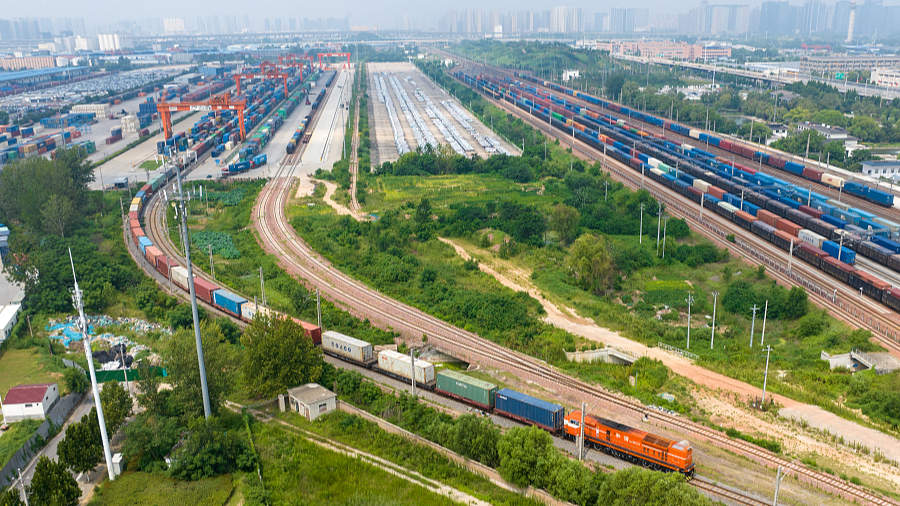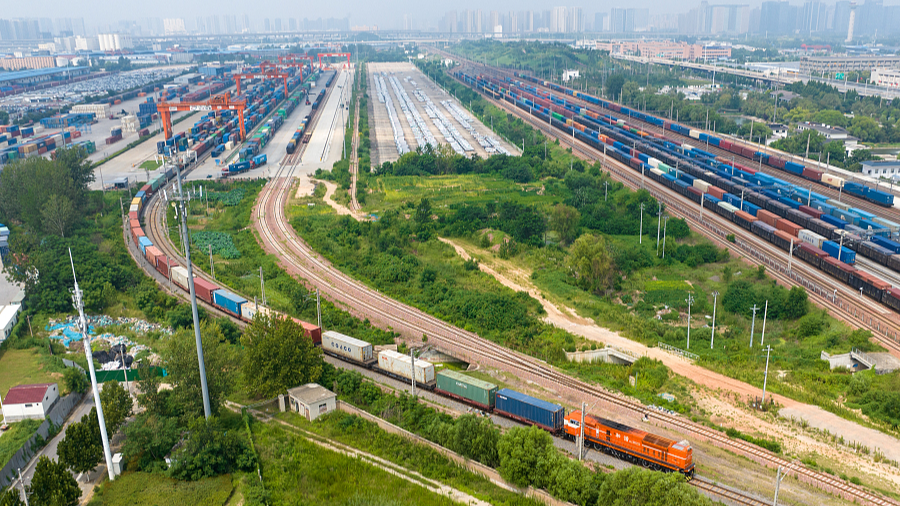 A China-Europe Railway Express freight train departs from Zhengzhou International Land Port, Zhengzhou, central China’s Henan Province, August 11, 2023. /CFP
A China-Europe Railway Express freight train departs from Zhengzhou International Land Port, Zhengzhou, central China’s Henan Province, August 11, 2023. /CFP
A China-Europe Railway Express freight train departs from Zhengzhou International Land Port, Zhengzhou, central China’s Henan Province, August 11, 2023. /CFP
More and more freight forwarders have turned to the China-Europe Railway Express (CRE), an extensive network of rail services connecting China and Europe, as a transportation alternative amid the Red Sea crisis, which has disrupted international shipping.
Experts say the increased use of the network has highlighted the rail route’s vital role in stabilizing global supply chains.
Houthis in Yemen have been attacking commercial ships “affiliated with and bound for Israel” since November. The attacks have raised the risks for transportation companies moving cargo through one of the world’s busiest shipping lanes, resulting in a surge in rates and lengthy delays.
According to a recent report by Fitch Ratings, the capacity of the CRE has seen a significant expansion from pre-crisis levels. Kong Weidong, head of the Zhengzhou branch of T.H.I. Group (Shanghai) Ltd., a freight forwarder, noted a remarkable increase in inquiries about the China-Europe freight train service since the beginning of the year.
“Since January, the number of inquiries has soared more than tenfold, and the actual export volume of goods has increased by three to four times,” Kong said. According to Kong, the China-Europe rail freight service typically takes between 12 and 18 days to reach European destinations from Chinese cities, at a cost of approximately $6,500 per container.
Kang Yingfeng, deputy general manager of China Railway International Multimodal Transportation (CRIMT), the national operator of the China-Europe freight train service, also noted a significant increase in inquiries about the China-Europe freight train service since January.
Big international logistics firms like DHL and Kuehne+Nagel have shown great interest in a new China-Europe freight route, combining rail and ocean transportation that crosses the Caspian and Black seas, Kang said. The network also passes through countries such as Kazakhstan and Georgia before reaching European countries.
DHL told The Financial Times last month that requests for goods transportation via the rail service to Russia had risen by about 40 percent since container ships began diverting via longer routes in December via the Cape of Good Hope, the southern point of the African continent.
Fu Cong, China’s ambassador to the European Union, stated in an article published on Euractiv, a European news website, that around 60 percent of China’s exports to Europe relied on the Red Sea route before the outbreak of the crisis, but now that 90 percent of those container ships from China have been forced to reroute via the Cape of Good Hope, which increases a minimum 12-day delay in shipping time.
He added that under such circumstances, many businesses began to consider using the CRE. “With the decline of freight volume in the Red Sea, this land route has bucked the trend to see strong growth. Inquiries made to the railway express have almost doubled. Most container service providers predict that railway transportation will grow dramatically in the years ahead,” Fu said.
During a recent interview with China News Service, Hannes Fellner, a professor from the University of Vienna, said the CRE plays the role of “stabilizer,” ensuring the security of international supply chains amid the Red Sea crisis.
Fabio Massimo Parenti, professor of international studies at the International Institute Lorenzo de’ Medici in Florence, said that the CRE is a partially complementary alternative to the maritime routes and “an example of the importance of the Chinese ideas where China is investing along with other countries.” He added that more than 200 cities in Europe benefited from the CRE.
By the end of February 2024, the CRE network had expanded to cover 219 cities across 25 European countries, according to data from China Railway.
